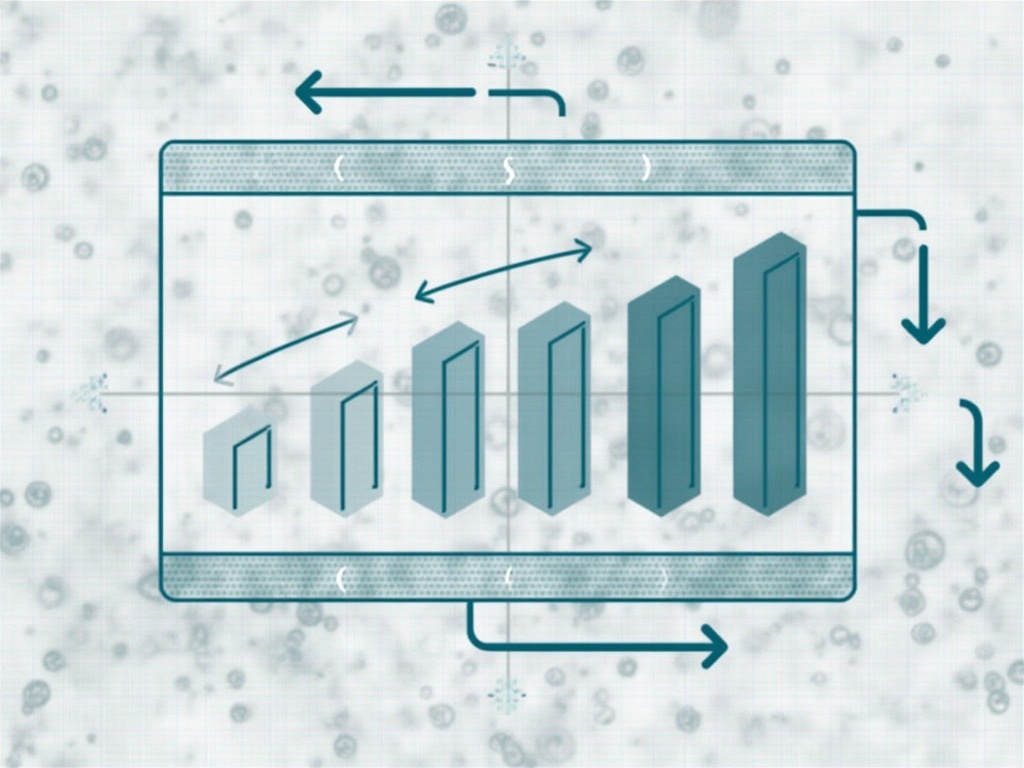Lead automation transforms the sales process, turning potential customers into valuable assets. By leveraging technology and strategic workflows, businesses can efficiently nurture and convert leads without constant manual intervention.
Key Takeaways:
- Automation streamlines lead qualification and scoring
- Personalized content delivery enhances engagement throughout the sales funnel
- Integration of CRM and marketing tools is crucial for seamless automation
- Data-driven insights enable continuous optimization of lead conversion strategies
- Timely follow-ups and targeted messaging increase conversion rates
Understanding Lead Automation
Lead automation is the process of using software and technology to manage and nurture leads automatically. It’s a game-changer for businesses looking to scale their sales efforts without proportionally increasing their workforce. By automating repetitive tasks, sales teams can focus on high-value activities that require a human touch.
The core of lead automation lies in creating a system that can identify, track, and engage with potential customers at various stages of the buying journey. This system typically involves a combination of marketing automation, customer relationship management (CRM) software, and analytics tools.

Key Components of Lead Automation
To create an effective lead automation system, several components need to work together seamlessly:
- Lead Capture: Implementing forms and landing pages to collect lead information
- Lead Scoring: Assigning values to leads based on their behavior and characteristics
- Email Marketing: Sending targeted, personalized emails at the right time
- CRM Integration: Centralizing lead data for easy access and management
- Analytics and Reporting: Tracking performance and identifying areas for improvement
Each of these components plays a crucial role in moving leads through the sales funnel efficiently. For instance, generating high-quality real estate leads can be significantly enhanced by automating the capture and initial engagement process.
Crafting an Effective Automation Strategy
To turn leads into gold, it’s essential to craft a well-thought-out automation strategy. This strategy should align with your overall business goals and consider the unique characteristics of your target audience. Here are some key steps to consider:
- Define clear objectives for your automation efforts
- Map out your ideal customer journey
- Segment your leads based on relevant criteria
- Create personalized content for each segment and stage
- Set up triggers and workflows for automated actions
By following these steps, you can create a system that nurtures leads effectively and moves them closer to conversion. For example, in the mortgage industry, marketing to realtors can be automated to consistently provide value and build relationships over time.
Implementing Lead Scoring
Lead scoring is a critical aspect of automation that helps prioritize leads based on their likelihood to convert. By assigning points to various actions and attributes, you can focus your efforts on the most promising prospects. Here’s how to implement an effective lead scoring system:
- Identify key actions that indicate buying intent
- Assign point values to demographic and firmographic data
- Consider negative scoring for undesirable behaviors
- Regularly review and adjust your scoring criteria
With a robust lead scoring system in place, your sales team can concentrate on high-value opportunities, increasing efficiency and conversion rates.
Personalizing the Lead Experience
Personalization is key to engaging leads effectively in an automated system. By leveraging the data collected through your lead capture and scoring processes, you can create highly targeted and relevant communications. Consider the following personalization tactics:
- Dynamic content in emails based on lead preferences
- Customized landing pages for different lead segments
- Personalized product recommendations
- Tailored follow-up sequences based on lead behavior
These personalization efforts can significantly boost engagement and conversion rates. For instance, when generating mortgage leads, personalized content addressing specific financial situations can be particularly effective.
Optimizing Your Automation Workflow
Once your lead automation system is in place, it’s crucial to continuously optimize your workflows for better performance. This involves:
- Regularly analyzing performance metrics
- A/B testing different elements of your automation
- Refining your lead scoring model based on actual conversion data
- Updating content and messaging to stay relevant
By consistently fine-tuning your automation processes, you can improve lead quality and conversion rates over time, turning more of your leads into valuable customers.
Conclusion
Lead automation is a powerful tool for scaling your sales efforts and improving conversion rates. By implementing a strategic approach that includes lead scoring, personalization, and continuous optimization, you can create a system that efficiently turns leads into gold. Remember, the key to success lies in balancing automation with a personal touch, ensuring that your leads receive the right message at the right time, guiding them smoothly through the sales funnel.
Sources:
Frequently Asked Questions
What is lead automation and how does it benefit my sales process?
Lead automation is the process of using software and technology to manage and nurture leads automatically. It benefits your sales process by streamlining lead qualification and scoring, enhancing engagement through personalized content, integrating CRM and marketing tools, providing data-driven insights for optimization, and ensuring timely follow-ups. This automation allows your sales team to focus on high-value activities, increasing efficiency and conversion rates.
How does lead scoring work in an automated system?
Lead scoring is a critical aspect of automation that helps prioritize leads based on their likelihood to convert. It involves assigning points to various actions and attributes, such as demographic and firmographic data, and behaviors indicating buying intent. For example, leads might receive higher scores for actions like email opens, content downloads, or site visits. Regular review and adjustment of the scoring criteria ensure the system remains effective in identifying high-value opportunities.
What are the key components of an effective lead automation system?
An effective lead automation system includes several key components:
- Lead Capture: Implementing forms and landing pages to collect lead information.
- Lead Scoring: Assigning values to leads based on their behavior and characteristics.
- Email Marketing: Sending targeted, personalized emails at the right time.
- CRM Integration: Centralizing lead data for easy access and management.
- Analytics and Reporting: Tracking performance and identifying areas for improvement.
How can I personalize the lead experience in an automated system?
Personalization is key to engaging leads effectively. You can achieve this by:
- Using dynamic content in emails based on lead preferences.
- Creating customized landing pages for different lead segments.
- Offering personalized product recommendations.
- Implementing tailored follow-up sequences based on lead behavior.
These personalization tactics significantly boost engagement and conversion rates by addressing the specific needs and preferences of each lead.
How do I optimize my lead automation workflow for better performance?
Optimizing your lead automation workflow involves:
- Regularly analyzing performance metrics to identify areas for improvement.
- Conducting A/B testing on different elements of your automation to find what works best.
- Refining your lead scoring model based on actual conversion data.
- Updating content and messaging to stay relevant and engaging.
By continuously fine-tuning your automation processes, you can improve lead quality and conversion rates over time.
People Also Ask
How Can Sales Process Automation Improve Lead Qualification and Scoring?
Sales process automation significantly enhances lead qualification and scoring by streamlining and standardizing these processes. Here’s how:
- Automated Lead Scoring: By using automated lead scoring systems, you can assign points to leads based on their behavior and characteristics, such as demographic and firmographic data. This helps prioritize leads that are more likely to convert, allowing your sales team to focus on high-value opportunities[2][5].
- Efficient Data Collection: Automation tools can capture and update customer data directly from various sources like emails, web forms, and CRM systems, reducing manual errors and ensuring consistency. This accurate data is then used to score leads more effectively[1][5].
What Are the Key Components of an Effective Lead Automation System?
An effective lead automation system consists of several crucial components that work together seamlessly:
- Lead Capture: Implementing forms and landing pages to collect lead information efficiently.
- Lead Scoring: Assigning values to leads based on their behavior and characteristics to prioritize them.
- Email Marketing: Sending targeted, personalized emails at the right time to engage leads.
- CRM Integration: Centralizing lead data for easy access and management.
- Analytics and Reporting: Tracking performance metrics and identifying areas for improvement to continuously optimize the system[5].
How Does Personalization Impact Lead Engagement in Automated Systems?
Personalization is a critical factor in engaging leads effectively within an automated system. Here are some ways personalization can boost engagement:
- Dynamic Content: Using data to create dynamic content in emails based on lead preferences and behaviors.
- Customized Landing Pages: Creating landing pages tailored to different lead segments to increase relevance.
- Personalized Product Recommendations: Offering product recommendations based on the lead’s past interactions and preferences.
- Tailored Follow-Up Sequences: Designing follow-up sequences that are personalized to the lead’s behavior and stage in the sales funnel[5].
What Are the Benefits of Integrating CRM and Marketing Automation Software?
Integrating CRM and marketing automation software offers several benefits that can significantly enhance your sales process:
- Seamless Data Flow: Ensures that customer data is consistently updated and accessible across all platforms.
- Consistent Communication: Guarantees consistent messaging and timely follow-ups across multiple channels and touchpoints.
- Advanced Segmentation and Personalization: Allows for advanced segmentation and personalization capabilities, especially beneficial for large e-commerce companies or SaaS startups[3][5].
How Can Continuous Optimization Improve Lead Conversion Rates?
Continuous optimization is vital for improving lead conversion rates in an automated system. Here are some steps to achieve this:
- Regularly Analyze Performance Metrics: Monitor key performance indicators (KPIs) to identify areas that need improvement.
- A/B Testing: Conduct A/B tests on different elements of your automation to determine what works best.
- Refine Lead Scoring Models: Update your lead scoring models based on actual conversion data to ensure they remain effective.
- Update Content and Messaging: Keep your content and messaging relevant by updating them regularly based on feedback and performance data[5].

